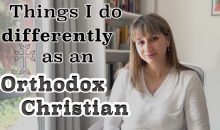The Cycle of Faith: Understanding the Eastern Orthodox Liturgical Calendar
The Eastern Orthodox Liturgical Calendar is a complex and rich system that guides the spiritual lives of millions of Orthodox Christians around the world. At its core, the calendar is a cycle of faith that revolves around the life, death, and resurrection of Jesus Christ. In this article, we will delve into the mysteries of the Eastern Orthodox Liturgical Calendar and explore its significance in the lives of Orthodox Christians.
Introduction to the Liturgical Calendar
The Eastern Orthodox Liturgical Calendar is based on the Julian calendar, which was introduced by Julius Caesar in 45 BCE. The calendar is divided into several cycles, including the daily cycle, the weekly cycle, and the annual cycle. Each cycle is filled with feasts, fasts, and commemorations that are designed to draw the faithful closer to God.
The Daily Cycle
The daily cycle begins with Vespers, a service that takes place in the evening and marks the beginning of a new day. Vespers is followed by Compline, a service that takes place before bedtime and prepares the faithful for the night ahead. The next morning, the faithful gather for Matins, a service that takes place in the early hours of the morning and marks the beginning of a new day. The daily cycle is completed with the Divine Liturgy, a service that takes place on Sundays and major feast days.
The Weekly Cycle
The weekly cycle revolves around the Lord’s Day, which is celebrated on Sunday. Sunday is a day of rest and worship, and it is considered the most important day of the week. The weekly cycle also includes other significant days, such as Wednesday and Friday, which are days of fasting and reflection.
The Annual Cycle
The annual cycle is divided into several periods, including the Nativity Fast, the Great Lent, and the Apostles’ Fast. The Nativity Fast is a 40-day period of fasting and reflection that prepares the faithful for the birth of Jesus Christ. The Great Lent is a 40-day period of fasting and reflection that prepares the faithful for the resurrection of Jesus Christ. The Apostles’ Fast is a variable-length period of fasting and reflection that commemorates the martyrdom of the apostles.
Major Feast Days
The Eastern Orthodox Liturgical Calendar is filled with major feast days that commemorate significant events in the life of Jesus Christ and the saints. Some of the most important feast days include Pascha (Easter), the Nativity of Jesus Christ (Christmas), and the Dormition of the Theotokos (the falling asleep of the Virgin Mary). These feast days are celebrated with great pomp and ceremony, and they are considered essential to the spiritual lives of Orthodox Christians.
Conclusion
The Eastern Orthodox Liturgical Calendar is a rich and complex system that guides the spiritual lives of millions of Orthodox Christians around the world. By understanding the daily, weekly, and annual cycles of the calendar, Orthodox Christians can deepen their faith and draw closer to God. Whether it’s through fasting, prayer, or worship, the Eastern Orthodox Liturgical Calendar provides a framework for living a life of faith and devotion.

